Incorporating the right lighting into your shower can transform an ordinary bathing space into a serene retreat, enhance safety, and highlight architectural details. From functional recessed lights to mood-setting color-changing LEDs, there’s a lighting solution for every style and budget. Careful consideration of fixture type, placement, and technology—such as dimmers, motion sensors, and smart controls—ensures a well-lit, inviting shower environment that stands up to moisture and meets safety codes. Below are 20 shower lighting ideas, each explained in detail to help you create a brighter, more luxurious shower experience.
1. Recessed Ceiling Lights
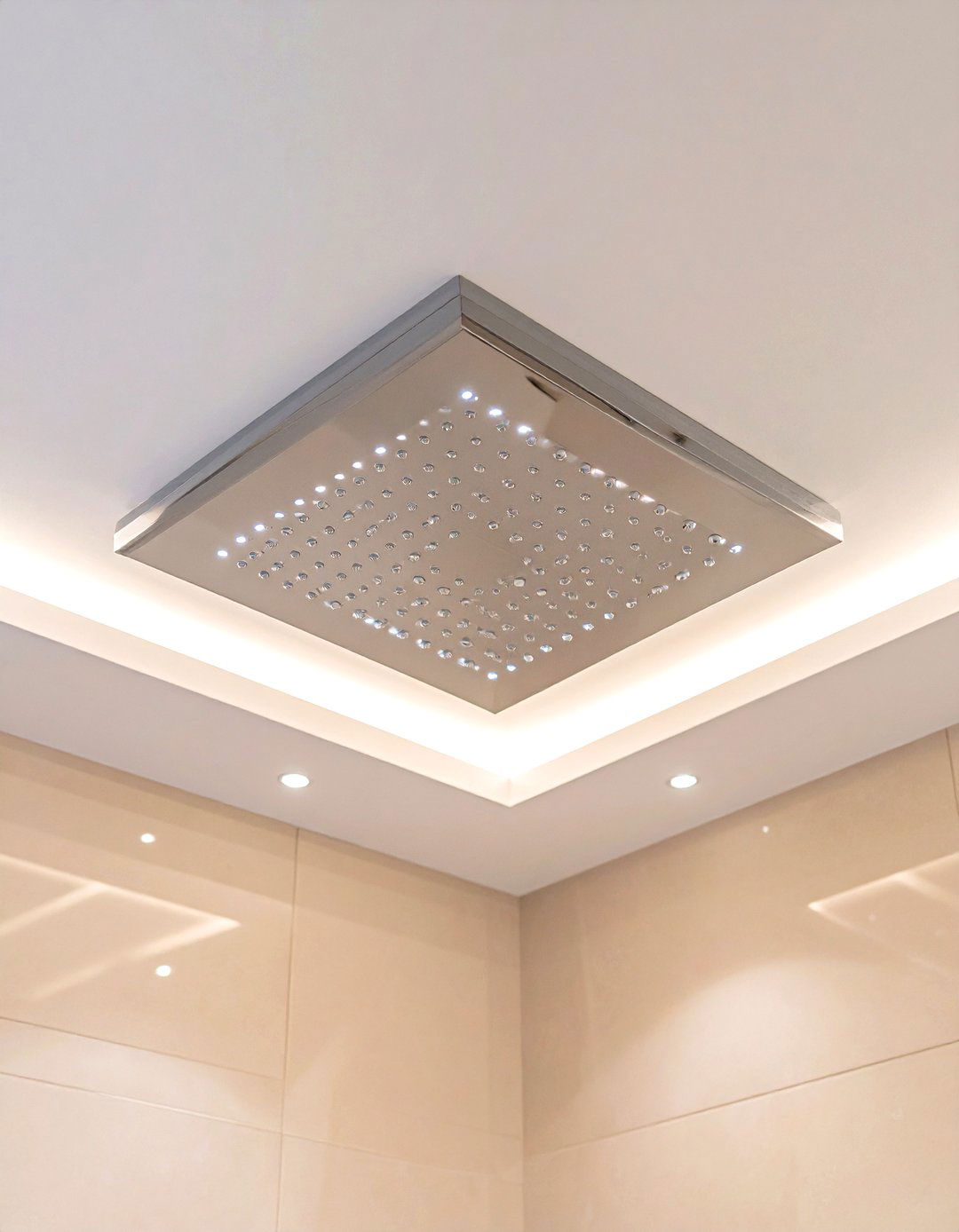
Recessed fixtures are a popular choice for shower ceilings due to their sleek, low-profile design and ability to provide even illumination across the space. These fixtures can be installed directly into the ceiling cavity, offering a clean look without protruding elements that might clash with minimalist décor. When selecting recessed lights for a wet location, choose fixtures rated for wet environments to ensure safety and longevity. LED versions consume less energy, produce less heat, and offer a variety of color temperatures, making them ideal for creating either bright, invigorating showers or softer, spa-like atmospheres.
2. LED Light Strips in Niches
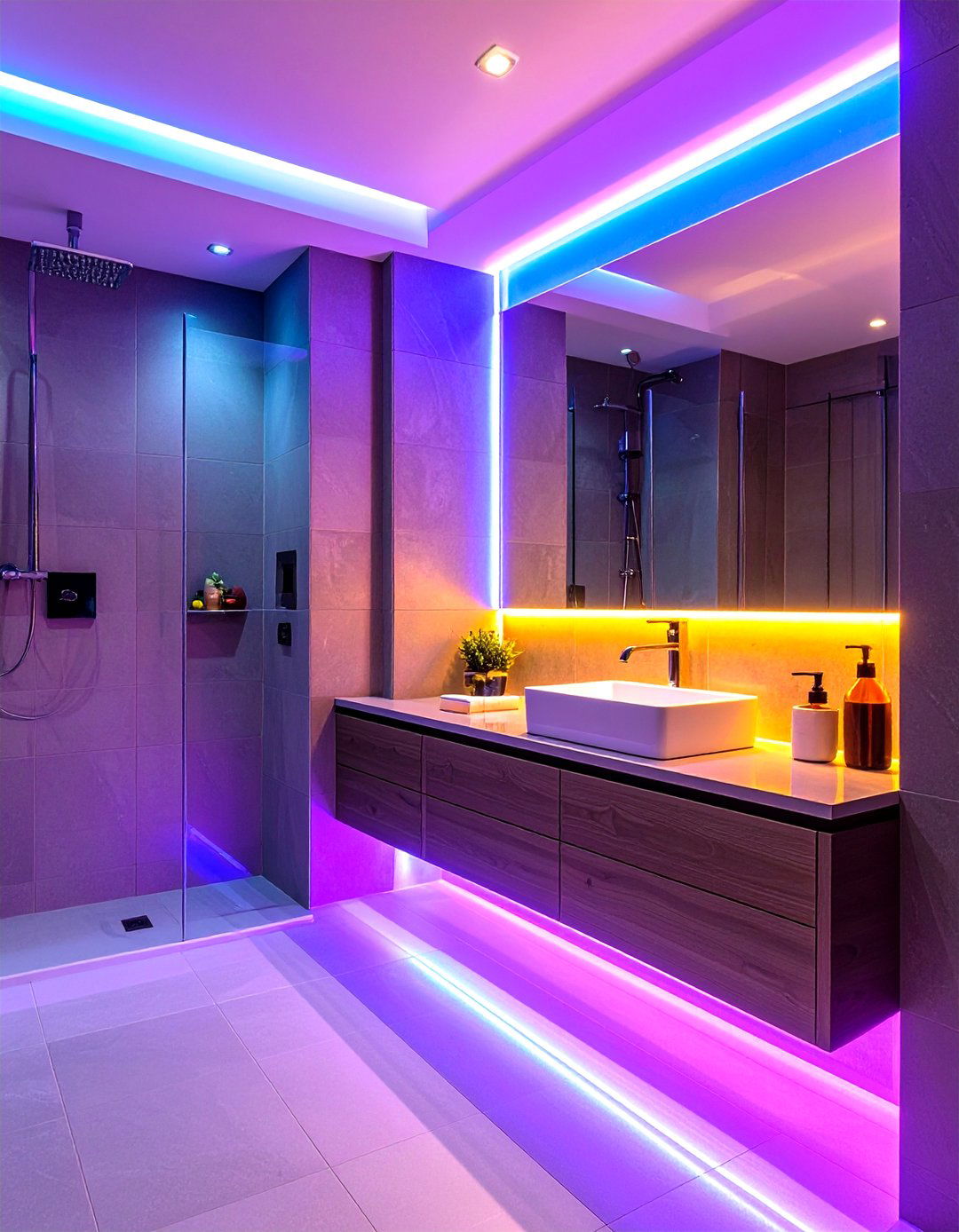
Installing waterproof LED strips along the edges of shower niches not only illuminates stored toiletries but also adds a subtle glow that enhances the tile work and finishes. LEDs clipped into niches cast light directly onto bottles and bars, reducing shadows and making items easier to see. Because LED strips are thin and flexible, they can conform to niche shapes and be hidden behind tile or trim for a seamless appearance. Many LED strips are dimmable and available in warm or cool white, allowing you to set the perfect mood for your daily routine.
3. Pendant Lights
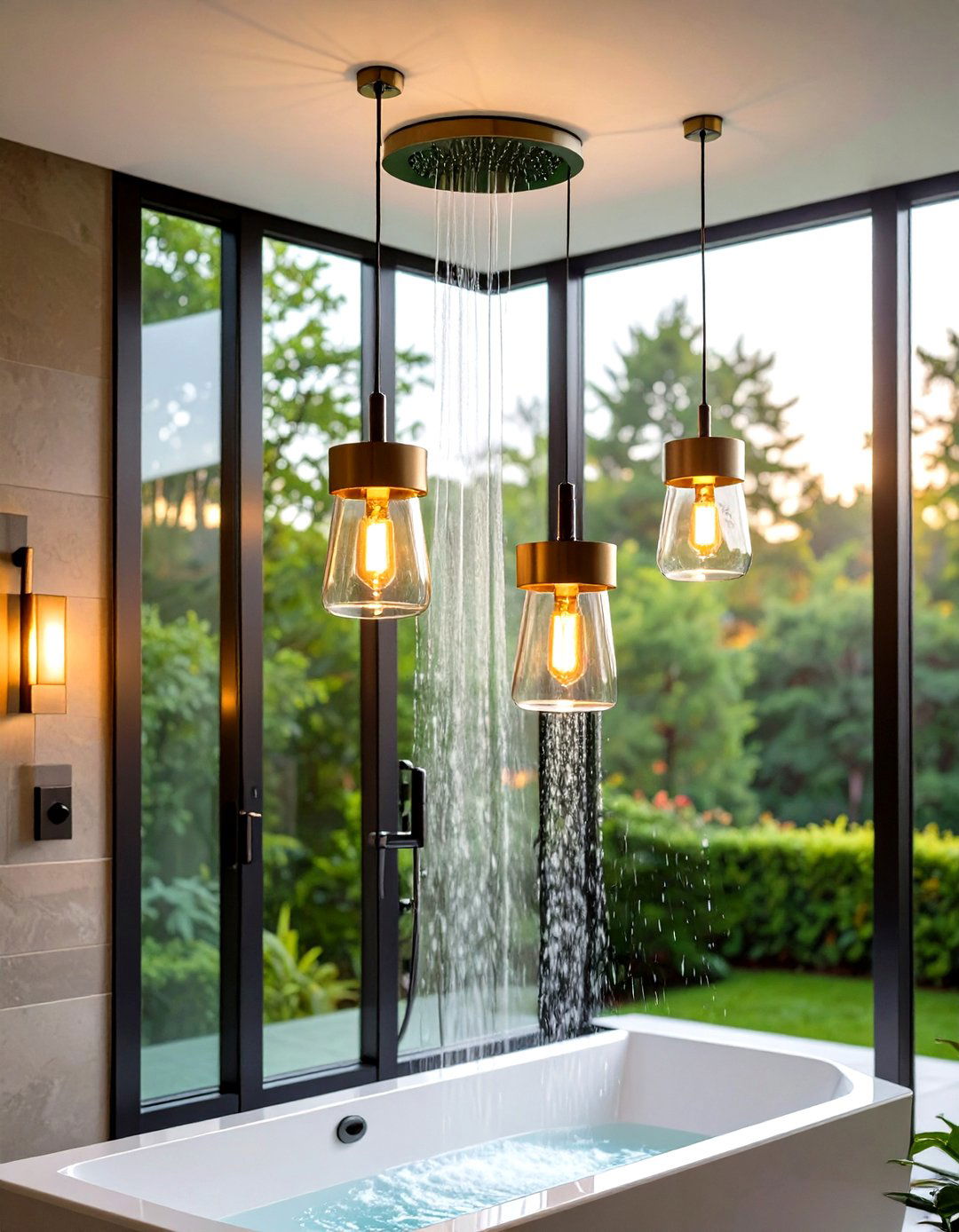
Waterproof pendant fixtures can lend a touch of elegance and visual interest to a shower area, creating a focal point that draws the eye upward. When hanging a pendant in a shower, choose one specifically rated for wet locations to prevent moisture damage and ensure code compliance. Glass or acrylic shades paired with LED bulbs offer both style and energy efficiency, while metal finishes like brushed nickel or matte black coordinate with contemporary or industrial bathroom themes. Position pendants over a bench or corner niche to avoid direct water spray.
4. Waterproof Shower Lamps
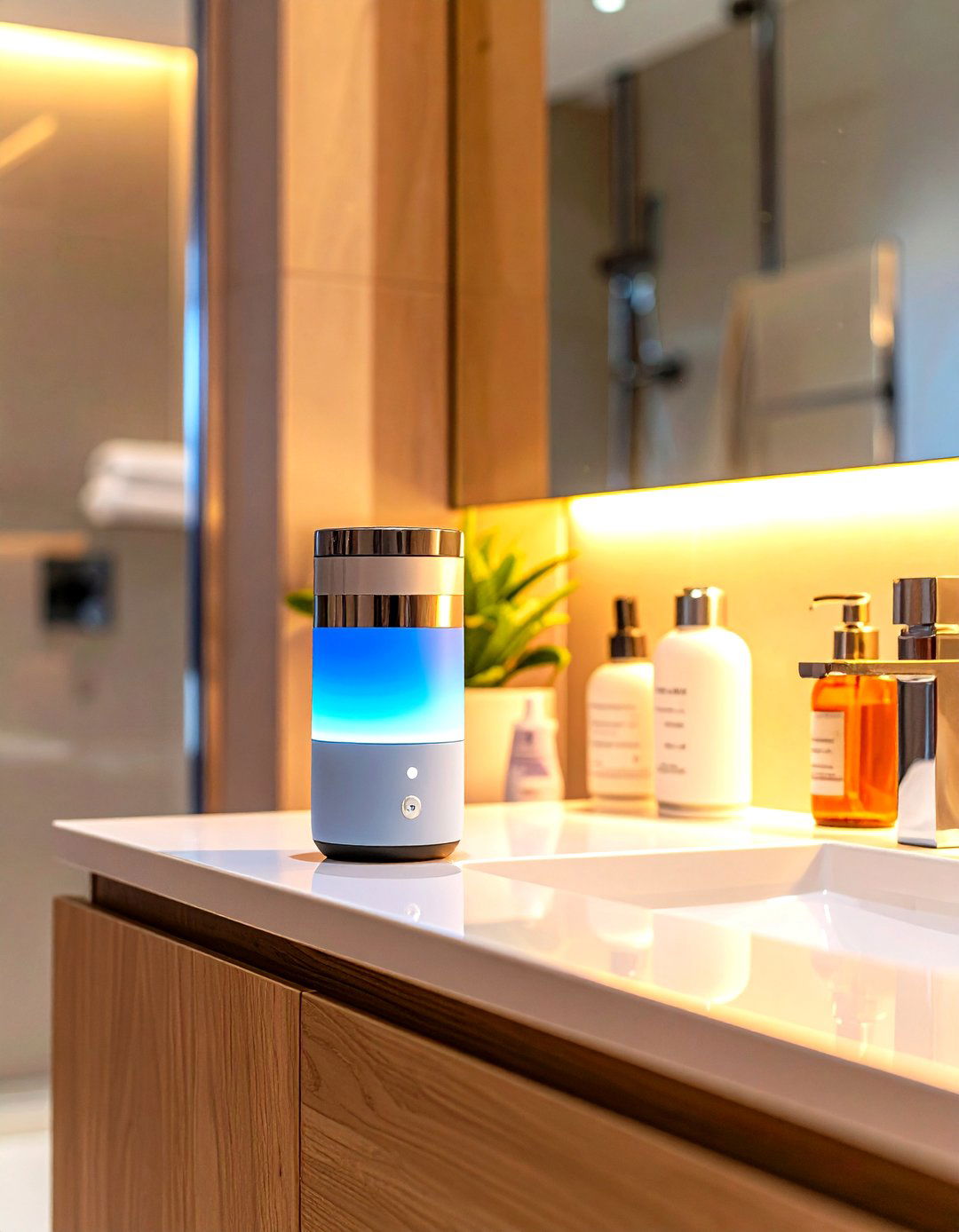
Battery-operated waterproof lamps have surged in popularity thanks to their easy installation and versatile placement. TikTok favorites like the waterproof shower lamp can be attached to adhesive shelves or suction-cup mounts, providing mood lighting without hardwiring. Many models feature rechargeable batteries, touch-activated controls, and multiple brightness levels or color options, allowing you to tailor the light for energizing morning routines or relaxing evening soaks. Be sure to select a lamp with an IP67 rating or higher for guaranteed protection against water immersion.
5. Skylights and Solar Tubes

Natural light is the ultimate way to brighten a shower without adding fixtures or electricity costs. Strategically placed skylights or tubular daylighting devices (TDDs) channel sunlight into the shower, creating a fresh, airy feel. Solar-powered attic vents combined with skylights can also help expel steam and control humidity, which is especially useful in windowless bathrooms. When installing over a shower, ensure the skylight has proper flashing and seals to prevent leaks and choose models designed to withstand moisture and condensation.
6. Backlit Tiles and Panels
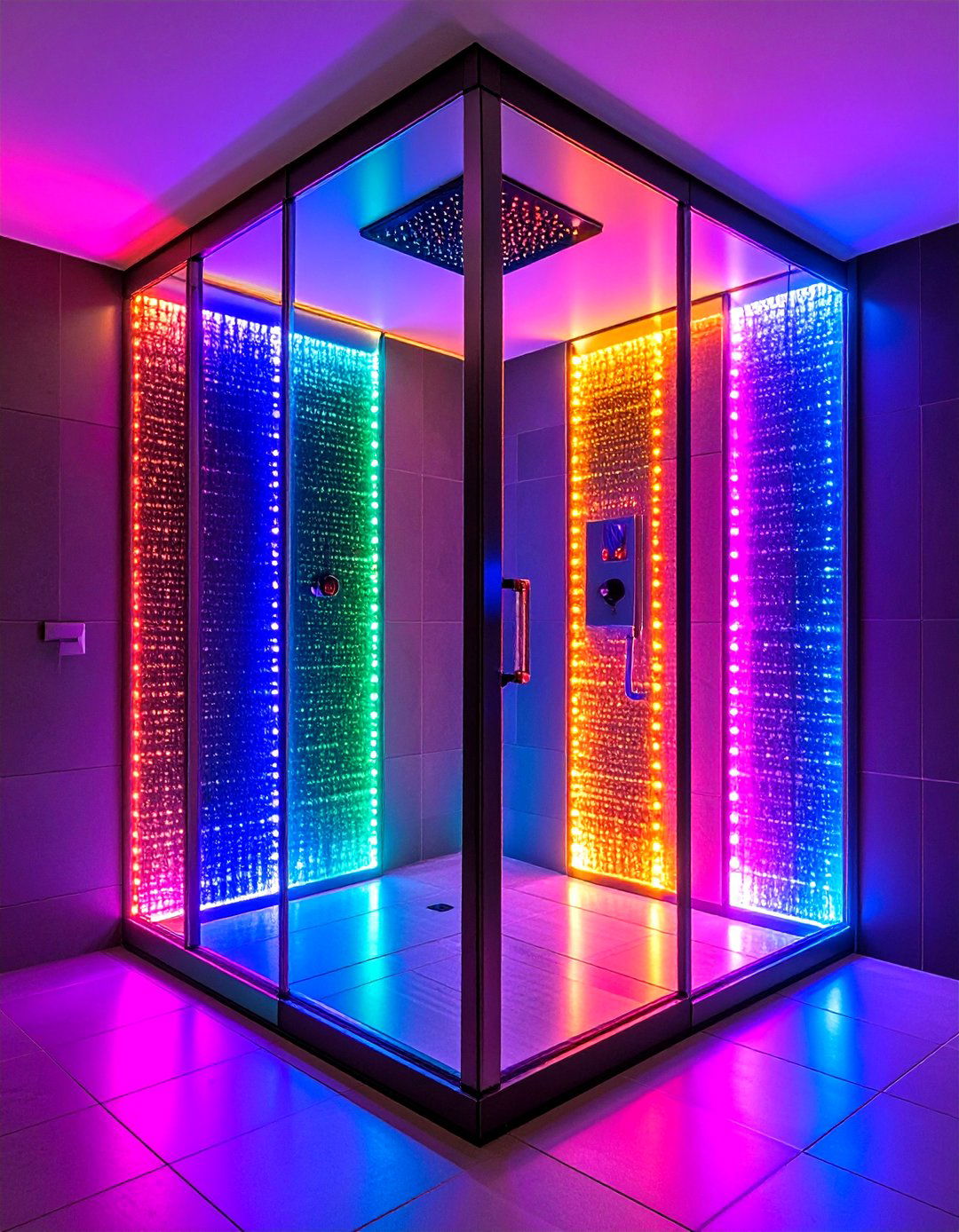
Integrating backlighting behind translucent tile or panels can produce a soft, diffused glow that highlights textures and patterns. This technique works especially well with onyx, glass, or thin porcelain panels, turning the shower wall into a luminous feature. LED light boxes or strips mounted behind the substrate evenly distribute light, eliminating hot spots and shadows. Backlit panels are often used as accent walls or around shower controls, helping to guide users safely to fixtures in low-light conditions.
7. Wall Sconces Outside the Shower
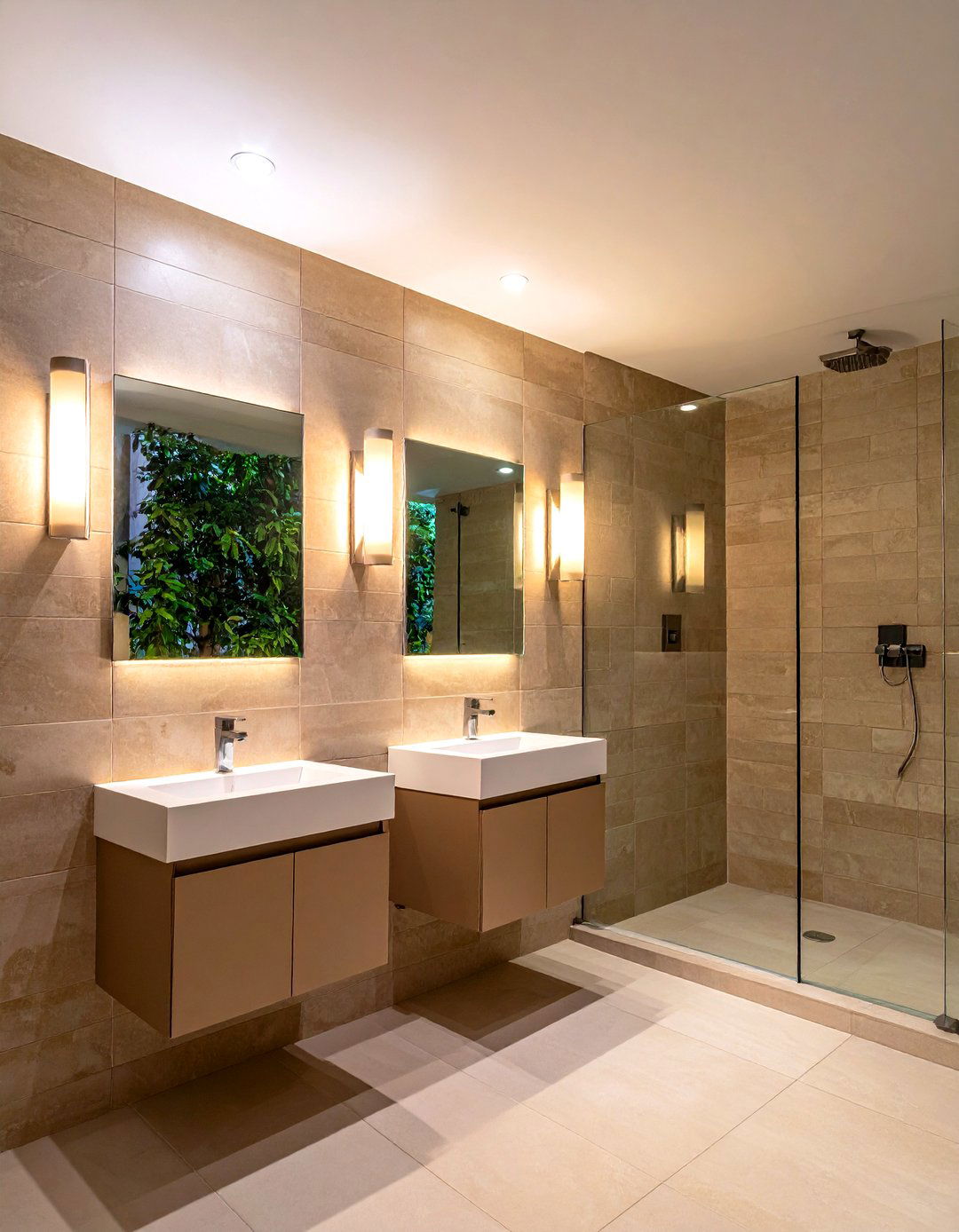
Placing damp-rated wall sconces just outside the shower alcove can indirectly illuminate the space without exposing fixtures to direct water spray. This approach offers wall-wash lighting that minimizes glare and highlights tile work. Choose sconces with downward or upward-directed light to reduce direct line-of-sight into the bulb, ensuring comfort while showering. Coordinating sconce finishes with shower hardware creates a cohesive design narrative throughout the bathroom.
8. Color-Changing LED Lights
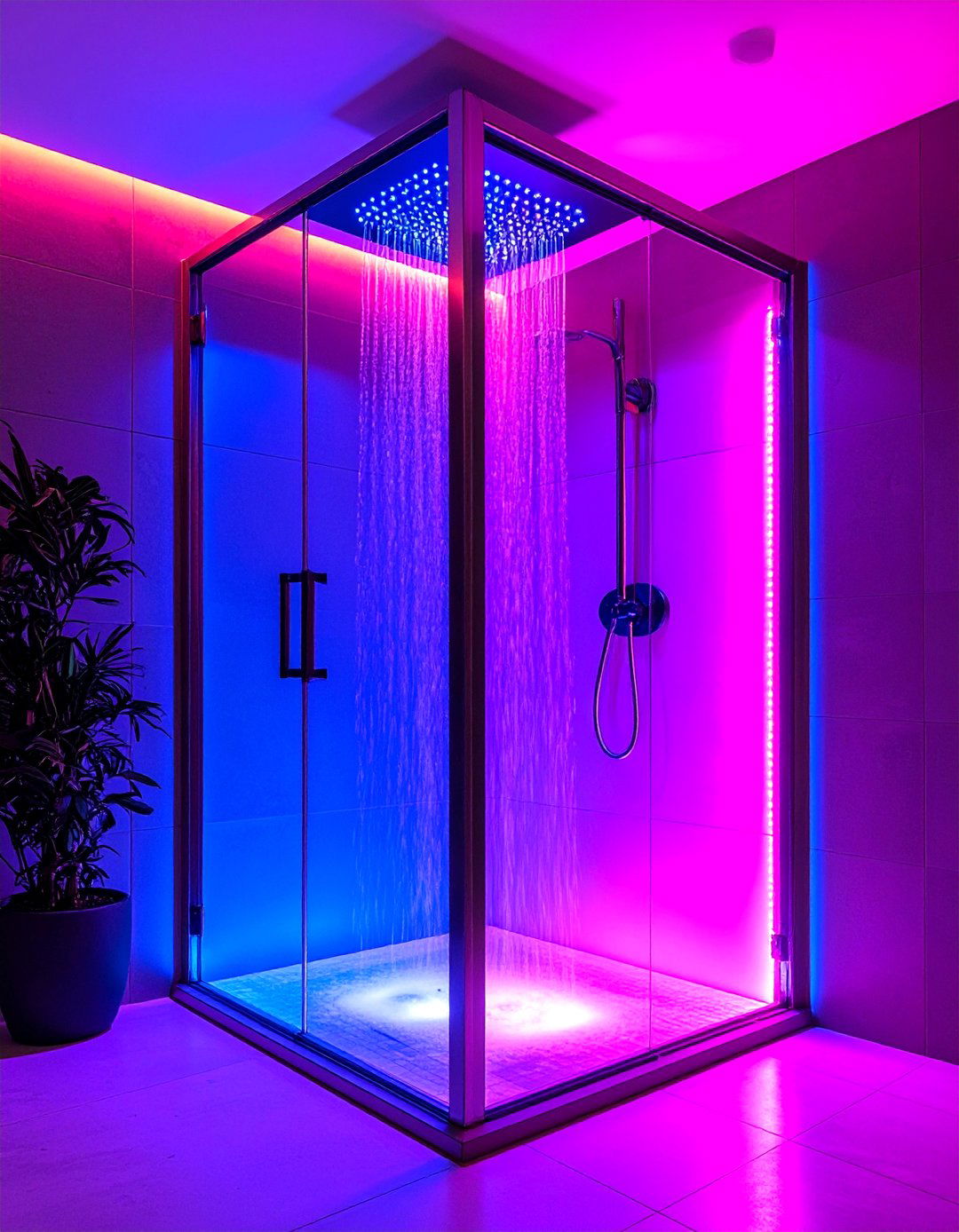
Smart RGB LED fixtures allow you to customize your shower’s color palette at the touch of a button or via mobile app. Philips Hue and similar systems offer wet-rated fixtures that integrate seamlessly into showers, letting you switch from energizing blues to calming pinks for a tailored bathing experience. These systems often support automation, syncing lighting with music or morning routines for a spa-like ambiance. Ensure the controller and power supply are installed outside wet zones to maintain safety.
9. Dimmable Overhead Lights
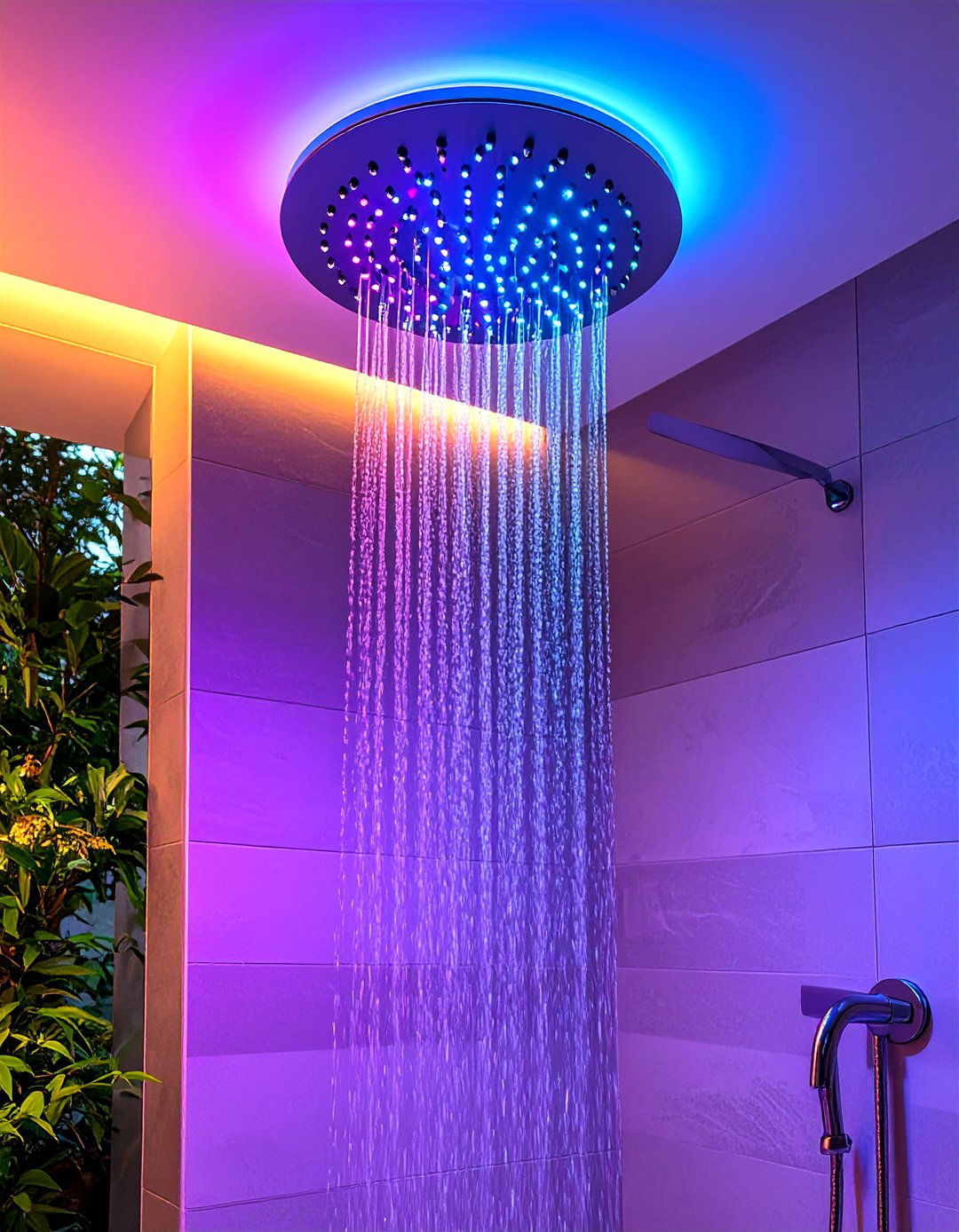
Installing a dimmer switch on overhead shower lights provides flexibility to adjust brightness based on time of day and activity. Bright settings help for efficient grooming tasks like shaving, while low light promotes relaxation. Dimmer-compatible LED fixtures reduce flicker and noise, ensuring smooth transitions between lighting levels. Use a three-way dimmer if the shower has multiple zones, so you can independently control shower lights and main bath lights.
10. Motion Sensor Lights
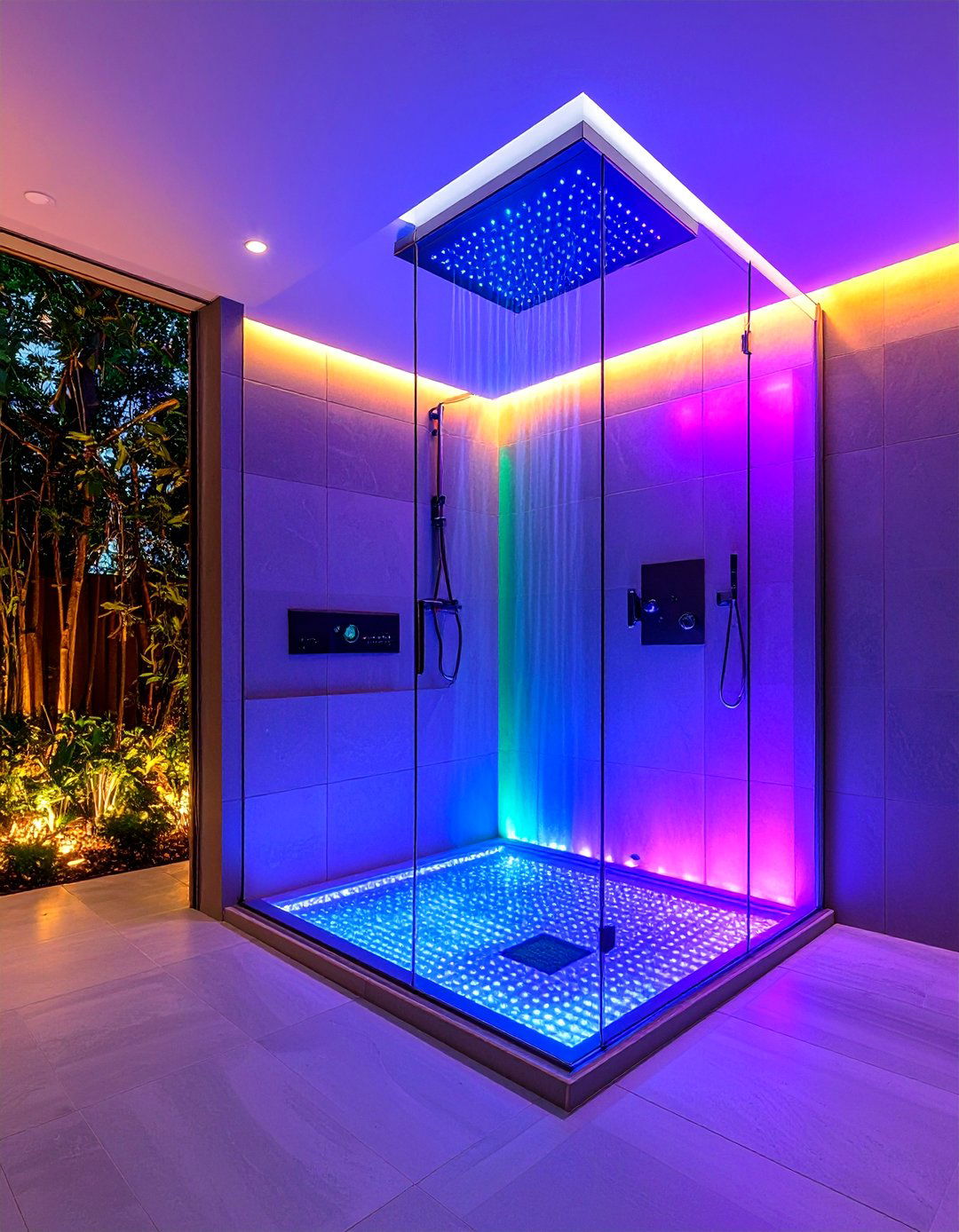
Motion-activated lights add convenience and safety, turning on automatically when you enter the shower and off when you leave. These fixtures often include adjustable sensitivity and hold times to prevent unwanted switching during brief pauses. Battery-powered versions simplify installation, while hardwired options require a sensor module rated for damp locations. Motion sensors are especially beneficial for guest baths or households with children, ensuring illumination without manual switching.
11. Chromotherapy Shower Panels

High-end shower panels with built-in chromotherapy lights combine water jets with colored LED illumination believed to enhance mood and well-being. These panels often feature multiple light zones—around the controls, overhead rain shower, and body jets—allowing synchronized color transitions. Chromotherapy shower systems typically include a touch panel to select colors or pre-programmed modes like “Relax” or “Energize”. Ensure the entire unit carries an IP rating suitable for wet environments.
12. Waterproof Pendant Chandeliers
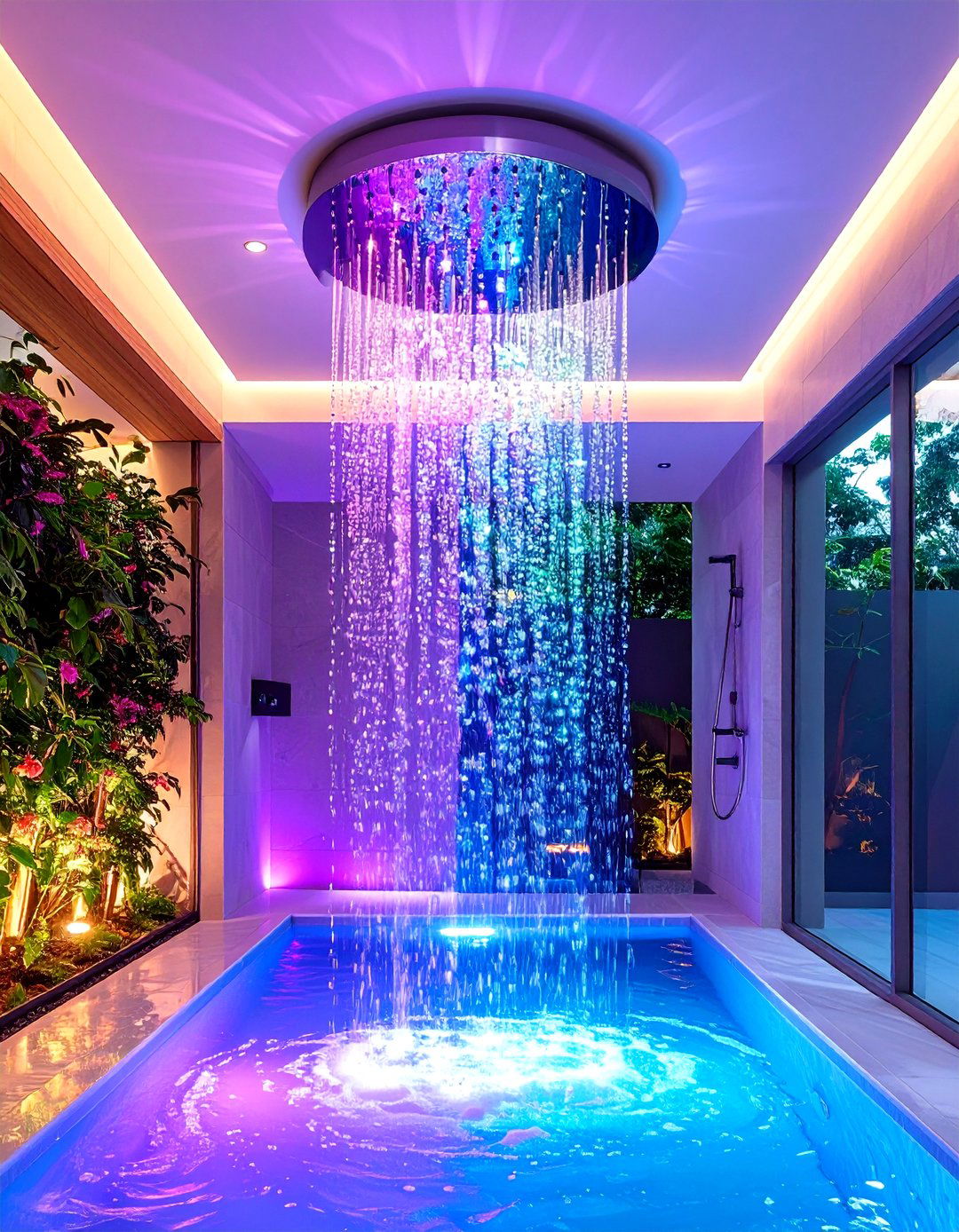
Miniature waterproof chandeliers can bring a touch of glamour to a large, open shower. Look for fixtures designed for wet locations, often featuring crystal or acrylic elements that sparkle under LED bulbs. Suspended at a safe distance from direct spray, these chandeliers become a focal art piece, especially in high-ceiling showers. Pair with dimmable LEDs to adjust sparkle intensity and complement other lighting layers.
13. Smart Lighting Systems
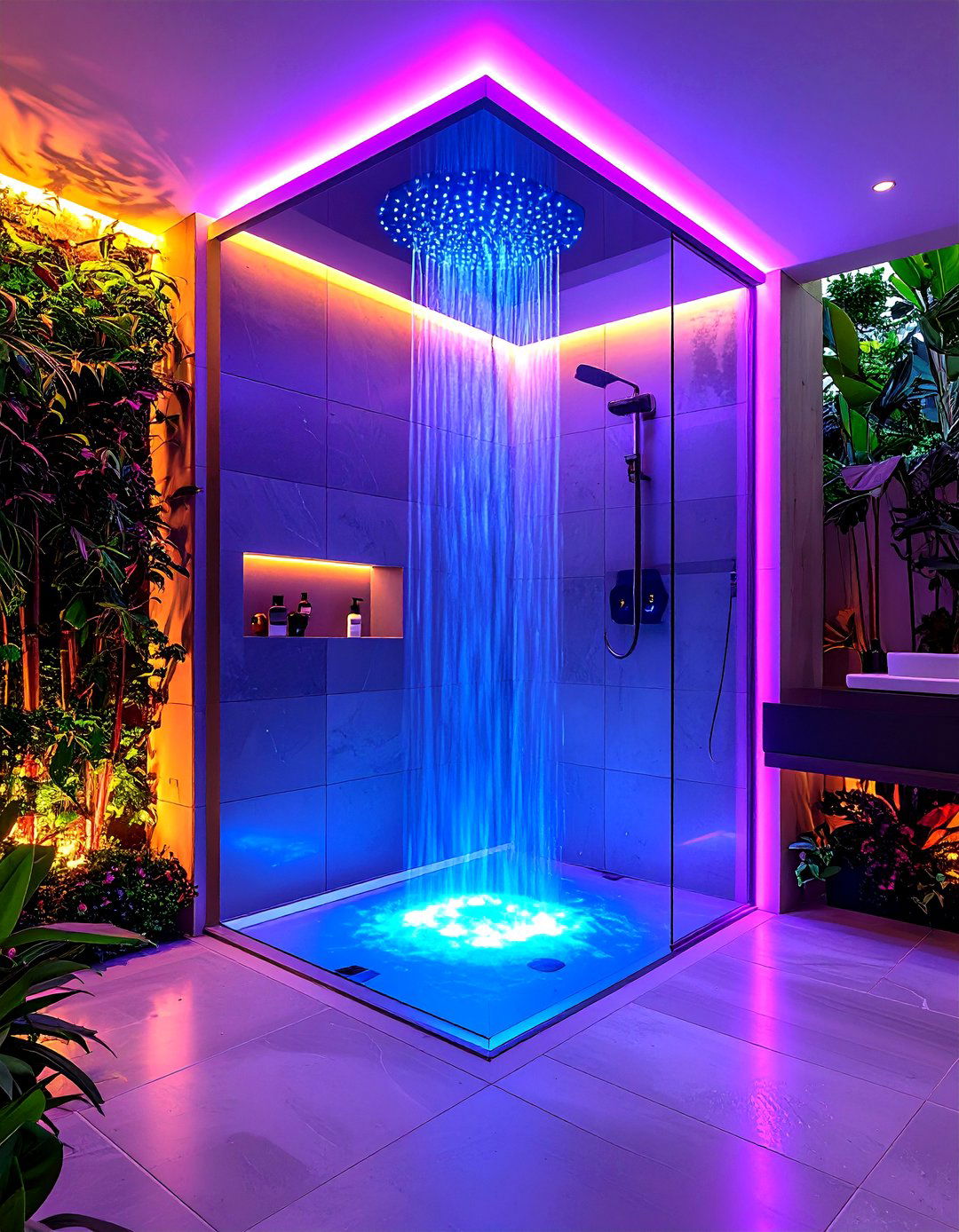
Integrating smart home platforms like Philips Hue or Lutron Caséta offers centralized control over shower lighting alongside other bathroom fixtures. Voice commands through assistants or preset scenes can adjust lights to “Morning Shower” brightness or “Evening Wind-Down” warmth. Smart dimmers and switches rated for wet zones ensure reliable performance and code compliance. Scheduling capabilities also allow lights to turn on at specific times, aiding safety for early risers.
14. Maximizing Natural Light with Clear Doors
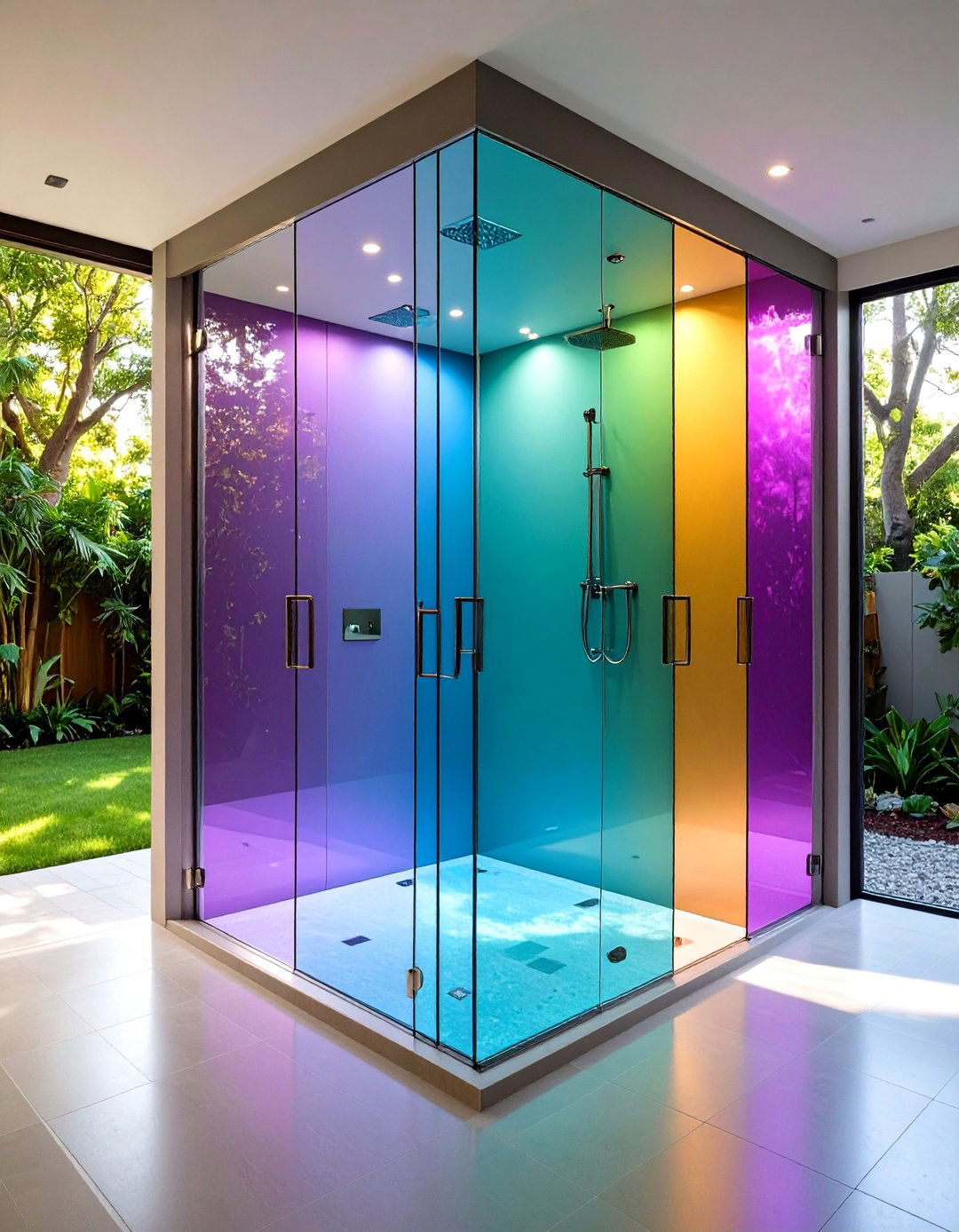
Choosing clear glass shower doors or liners allows ambient bathroom light—natural or artificial—to penetrate the enclosure, reducing shadows and creating an open feel. Frosted or patterned glass balances privacy with light transmission. Combining clear enclosures with glossy tile further amplifies brightness through reflection, making the most of existing fixtures.
15. Underfoot LED Floor Lighting

Installing waterproof LED strips around the perimeter of the shower floor creates a floating effect, enhancing visibility underfoot and adding a futuristic vibe. These lights are embedded beneath floor trim or behind a niche at floor level, casting upward illumination to accentuate tile textures. Use low-voltage systems with a remote transformer placed outside wet zones for safety.
16. Cove Lighting in Ceiling Recesses
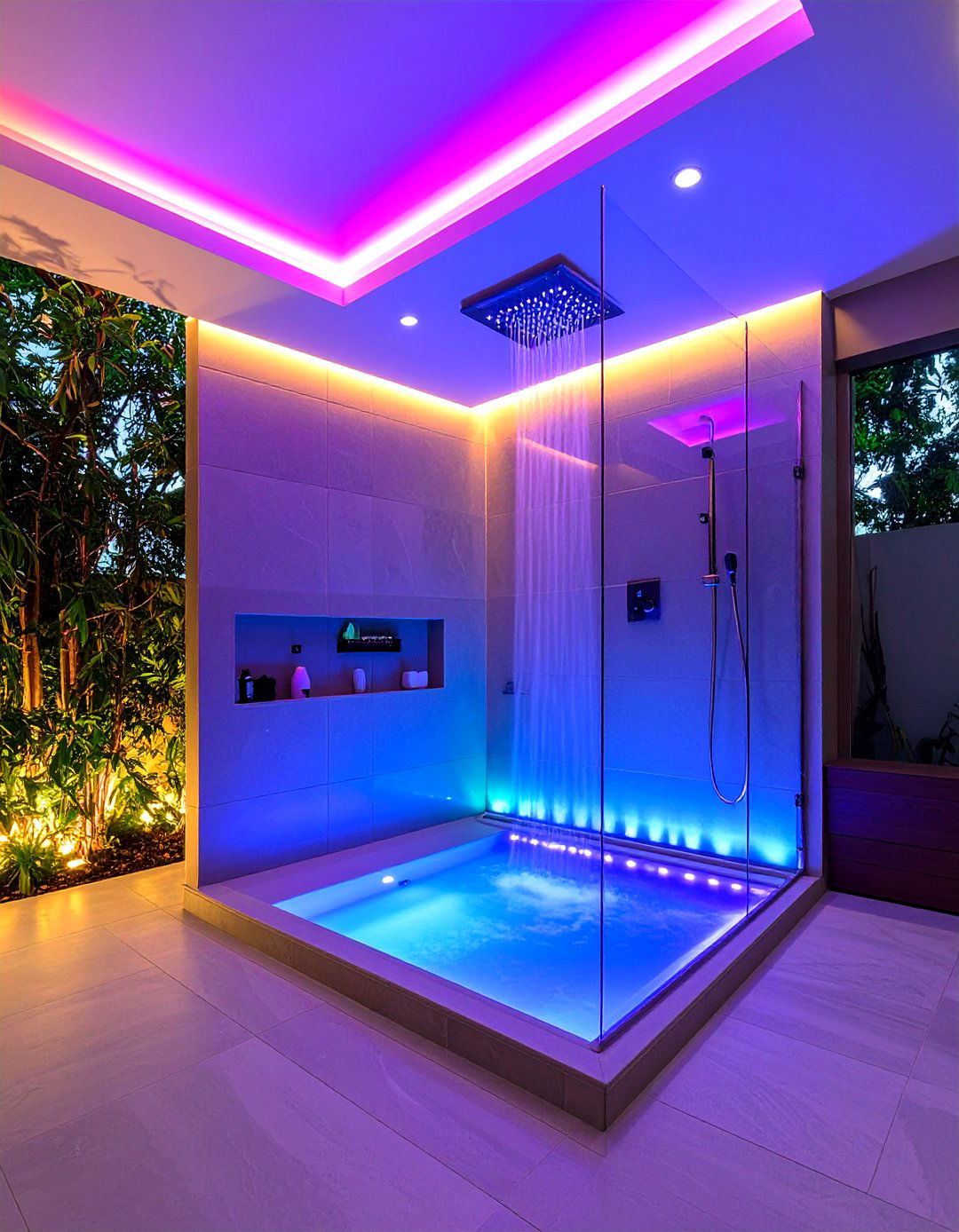
Creating a ceiling recess around the shower perimeter and installing hidden LED strips inside produces a soft, indirect glow that highlights architectural details and provides ambient light. This approach minimizes glare while preventing direct water contact with fixtures. Cove lighting works well with painted or tiled ceilings and pairs nicely with recessed downlights for layered illumination.
17. Mirror-Integrated Lighting
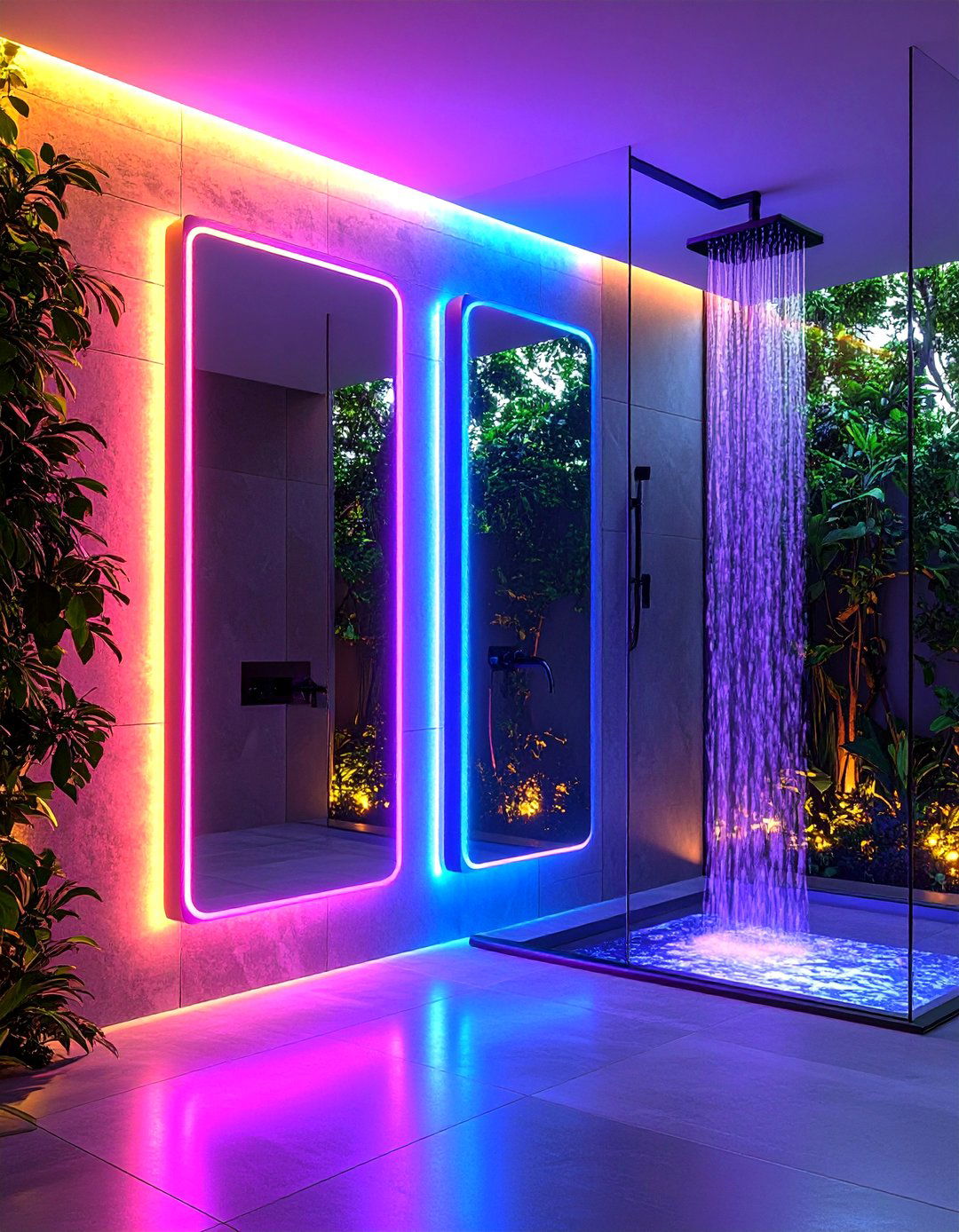
For showers adjacent to mirrors, use LED mirrors with rear-mounted lighting that spills into the shower area, enhancing overall brightness. Though not inside the shower itself, the reflected light increases perceived illumination within the enclosure. This technique also frees up ceiling space for ventilation or skylights.
18. Accent Spotlights
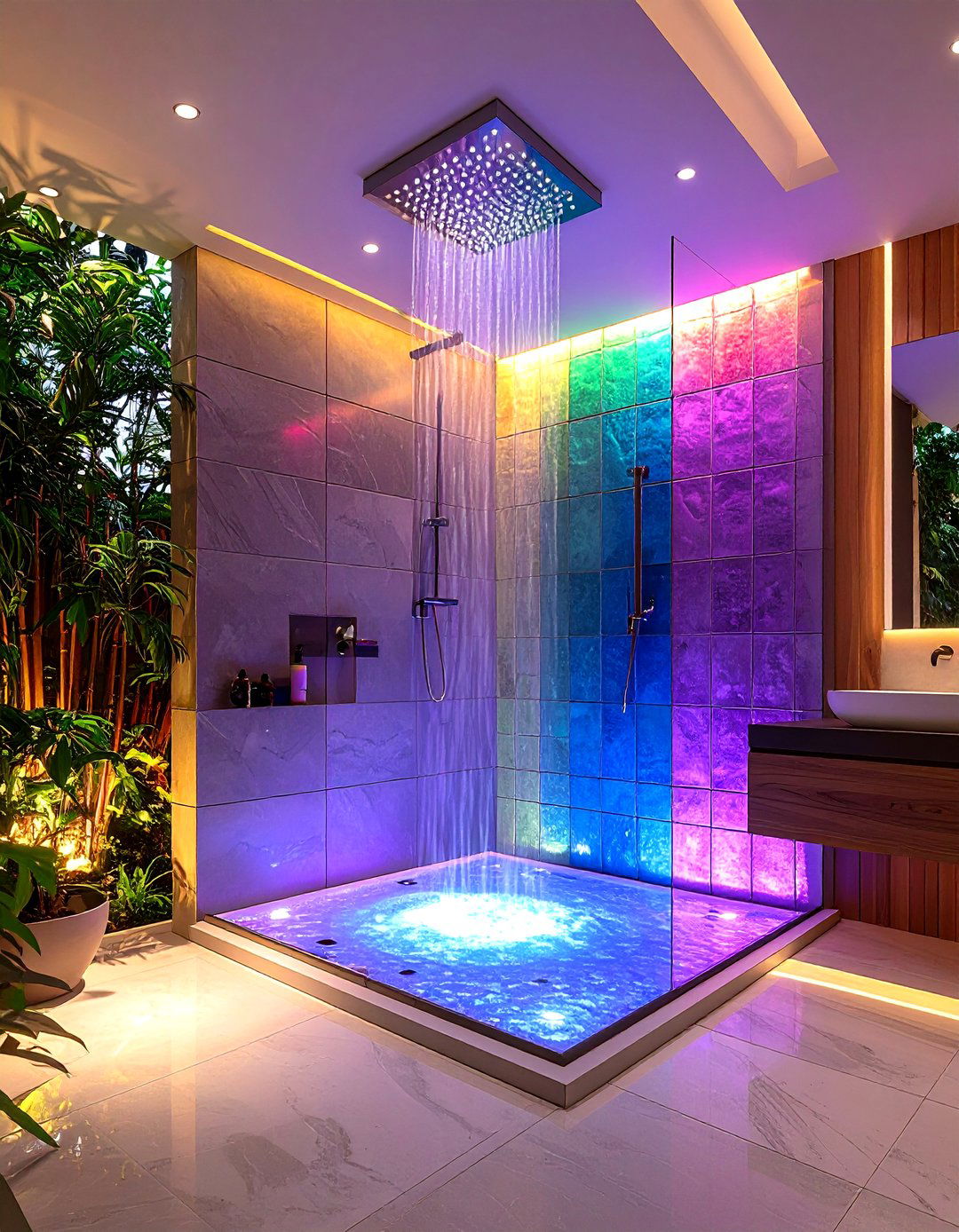
Directional spotlights aimed at a feature wall or showerhead can create dramatic accents and highlight luxury finishes like marble or mosaic tile. Use damp-rated, pivoting fixtures installed just outside the shower or in a protected ceiling zone to minimize direct spray exposure. Spotlights on a track system add flexibility, allowing you to reposition beams as décor changes.
19. Rope Lights Along Ceiling Coves

Flexible, waterproof rope lights can be tucked into ceiling coves or behind crown molding to softly illuminate the upper periphery of the shower. This continuous line of light accentuates ceiling details and provides a gentle wash that complements overhead lights. Rope lights are easy to install and conceal, making them a cost-effective accent option.
20. Integrated Shower System Lighting
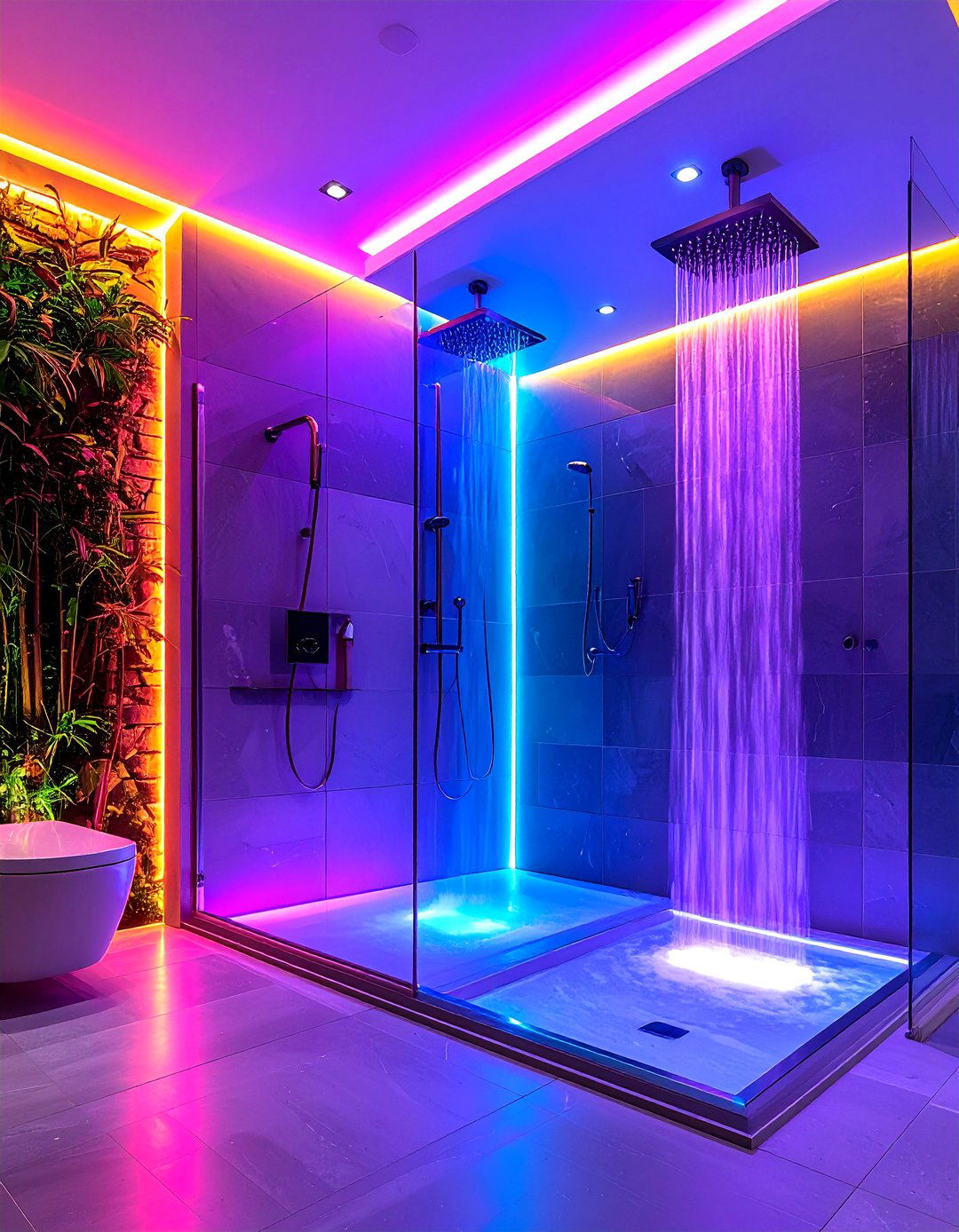
All-in-one shower panels often include built-in lighting around controls, rain heads, and hand showers, unifying water delivery and illumination. These units are factory-sealed and rated for wet locations, simplifying installation and ensuring a cohesive look. While typically more expensive, integrated systems offer coordinated performance and reduce the need for separate fixtures.
Conclusion:
Thoughtful shower lighting enhances safety, functionality, and aesthetics, transforming daily routines into luxurious rituals. By combining task lighting, accent features, and ambient sources—supported by dimmers, smart controls, or natural skylights—you can craft a customized environment that uplifts and relaxes. Whether you prefer the subtle glow of LED strips or the drama of a waterproof chandelier, these 20 ideas provide a roadmap to illuminate your shower in style and confidence.


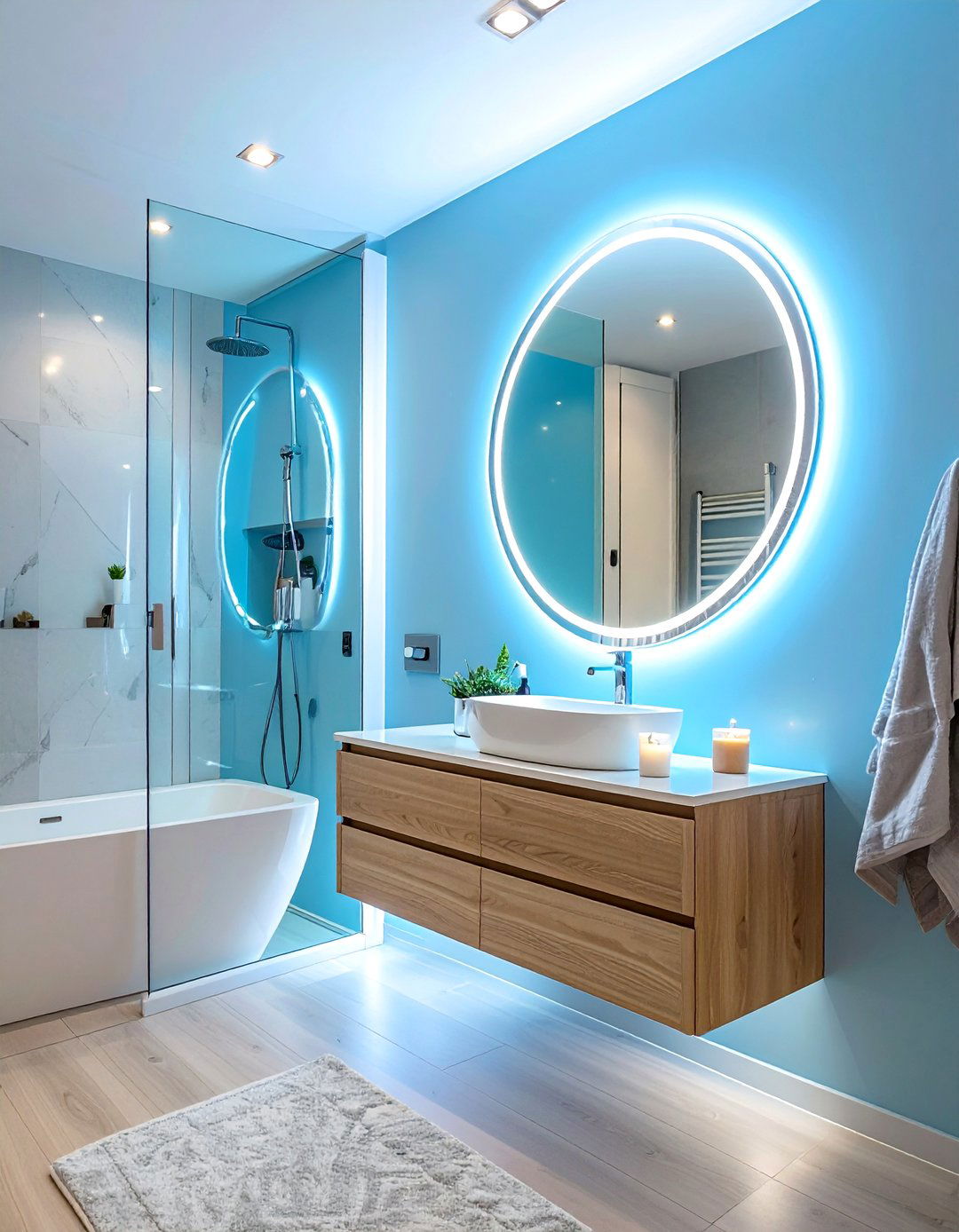
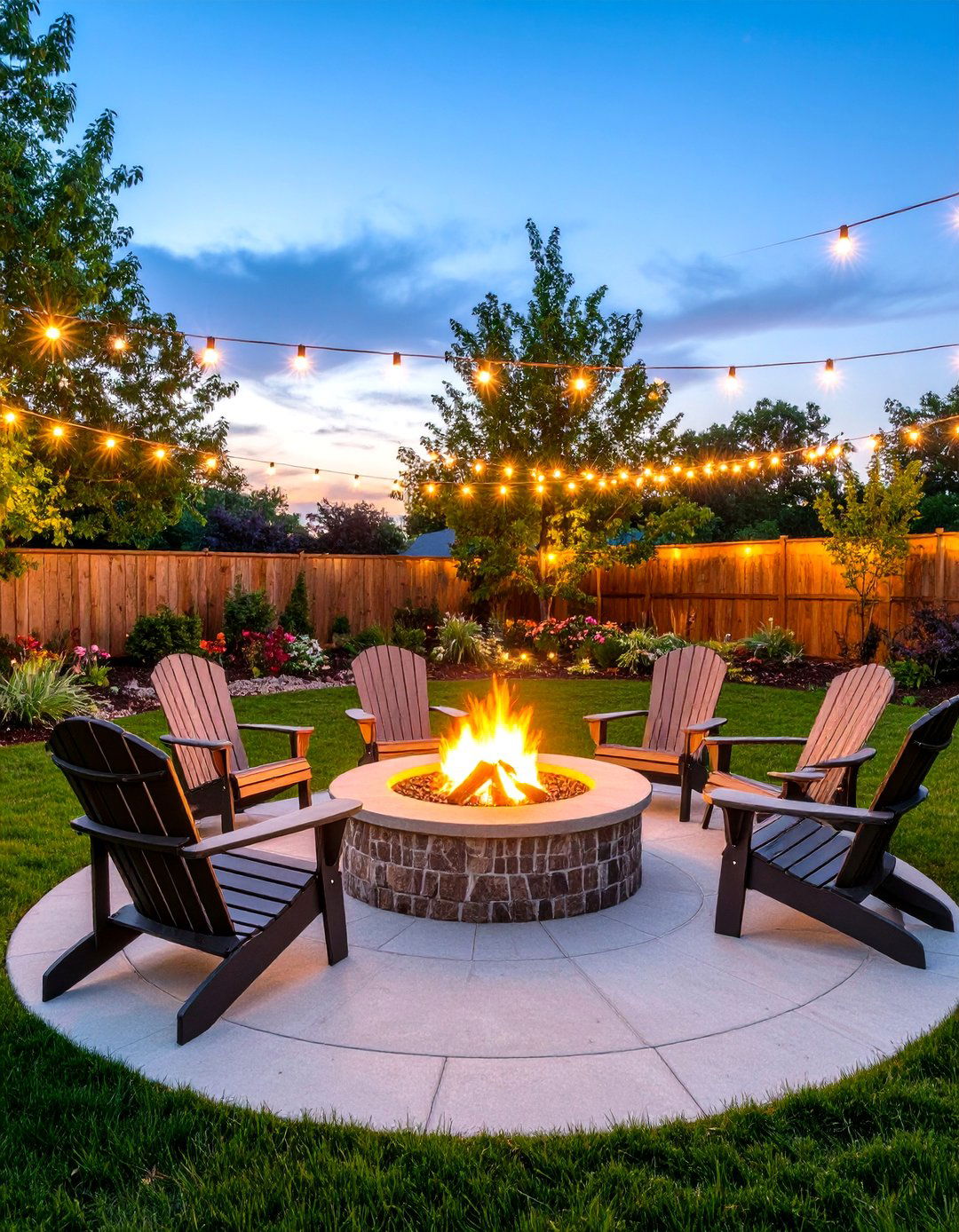
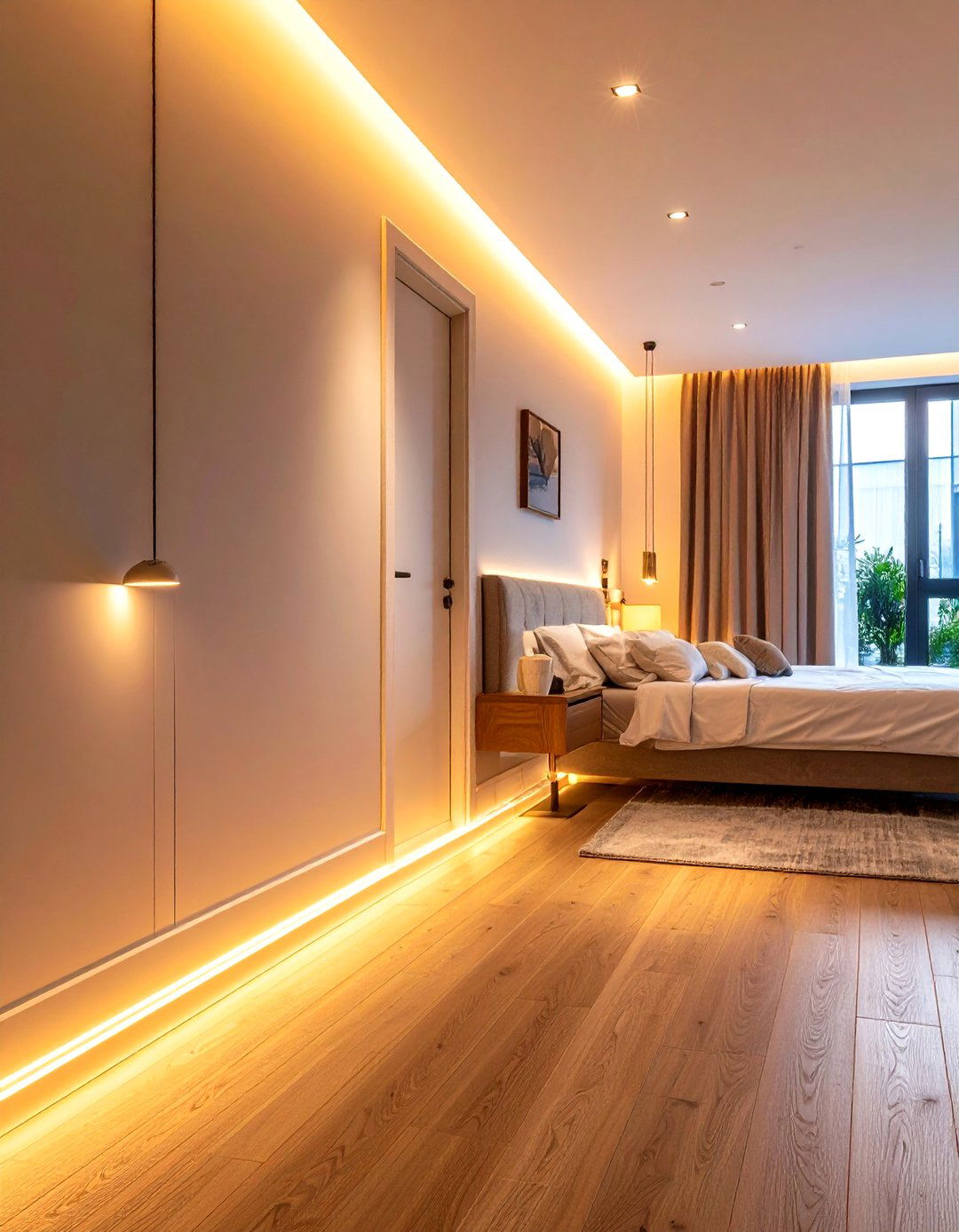

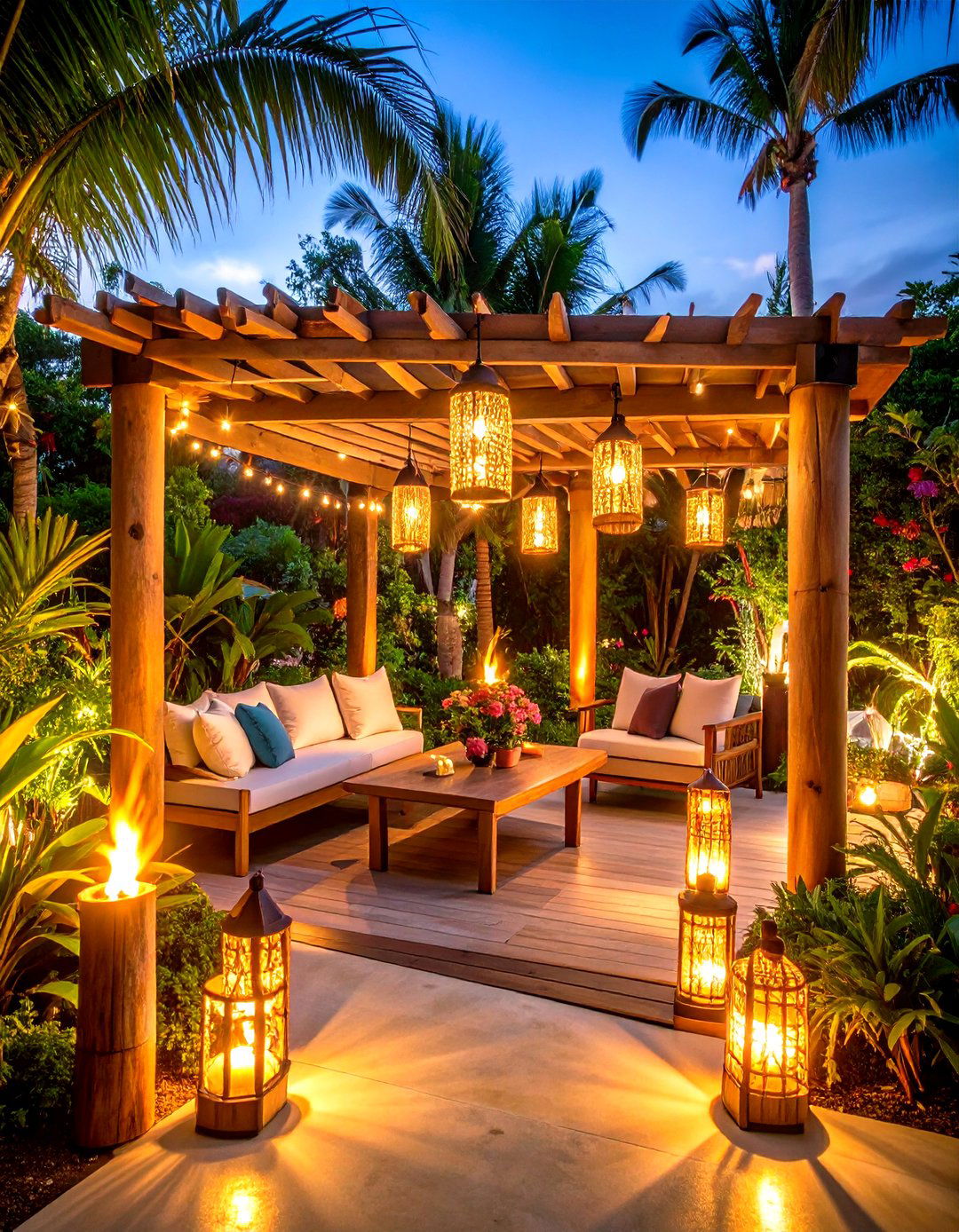
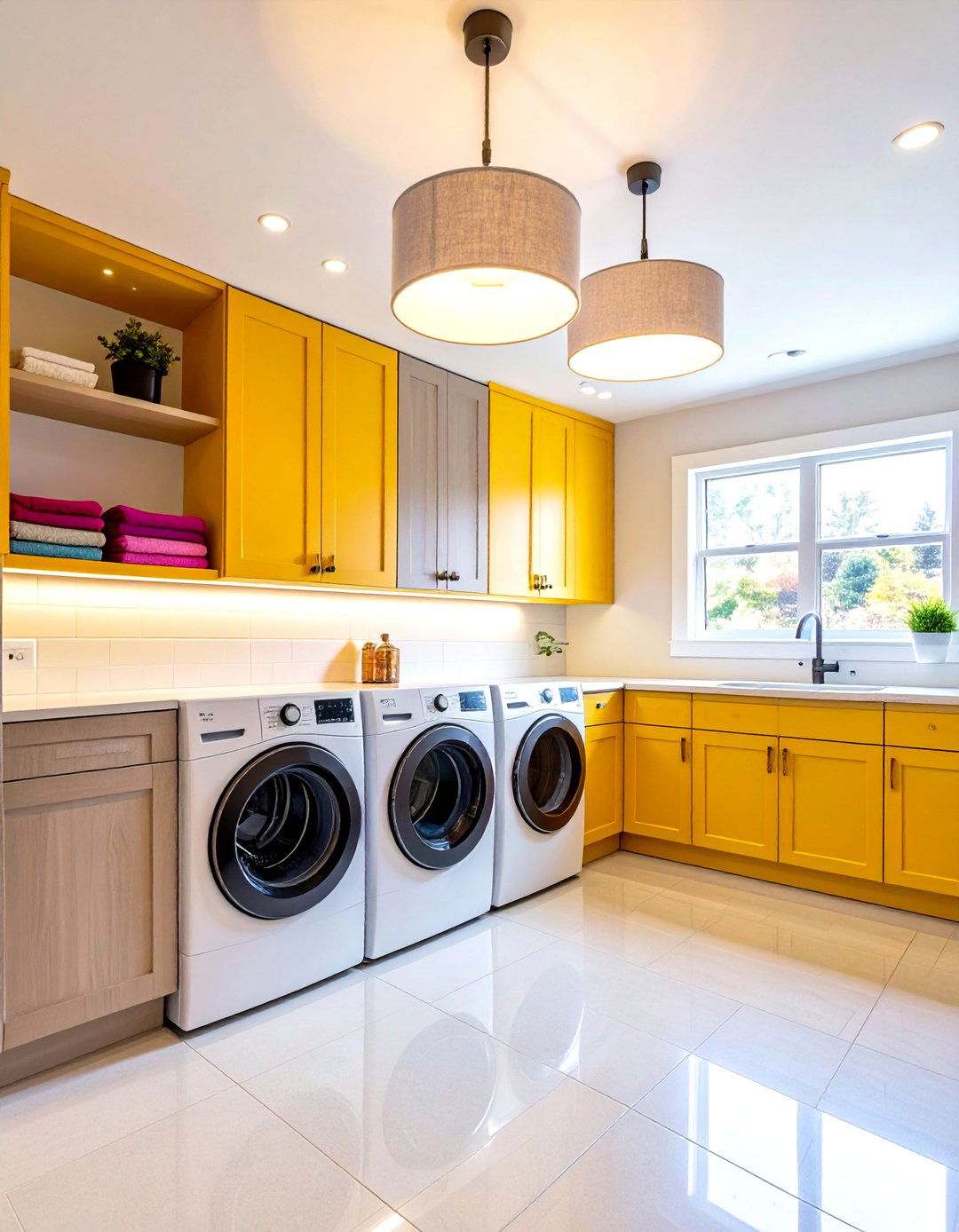
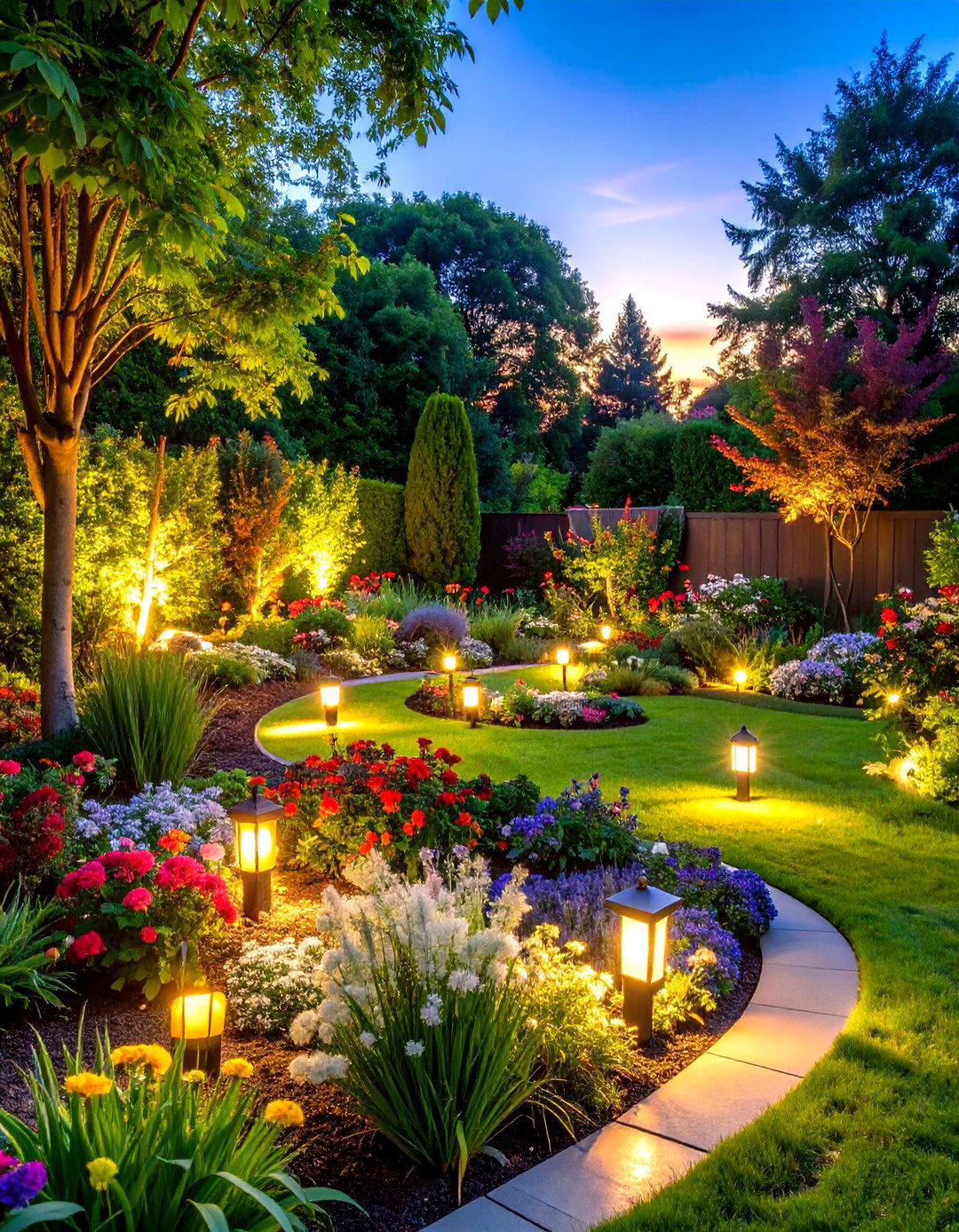
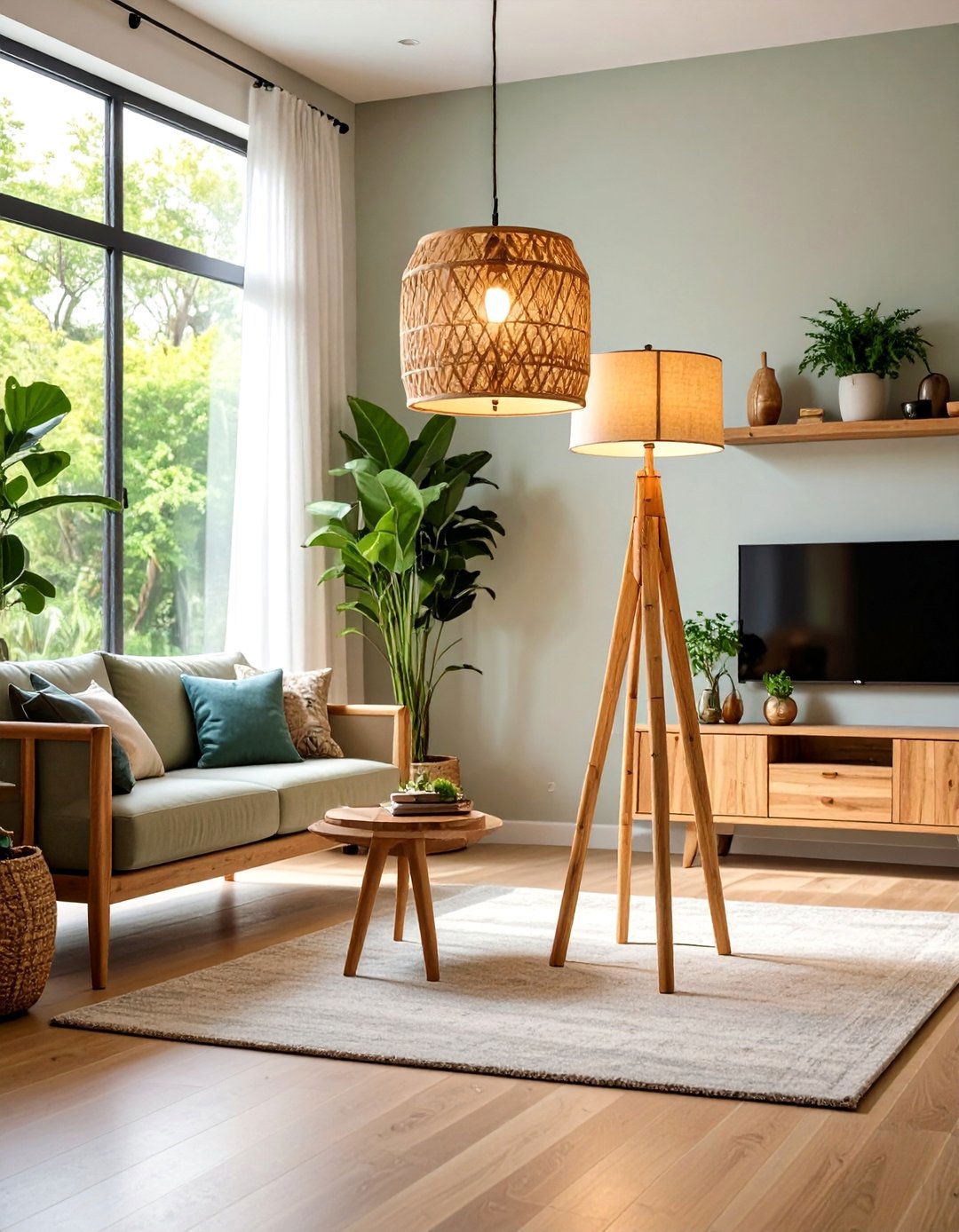

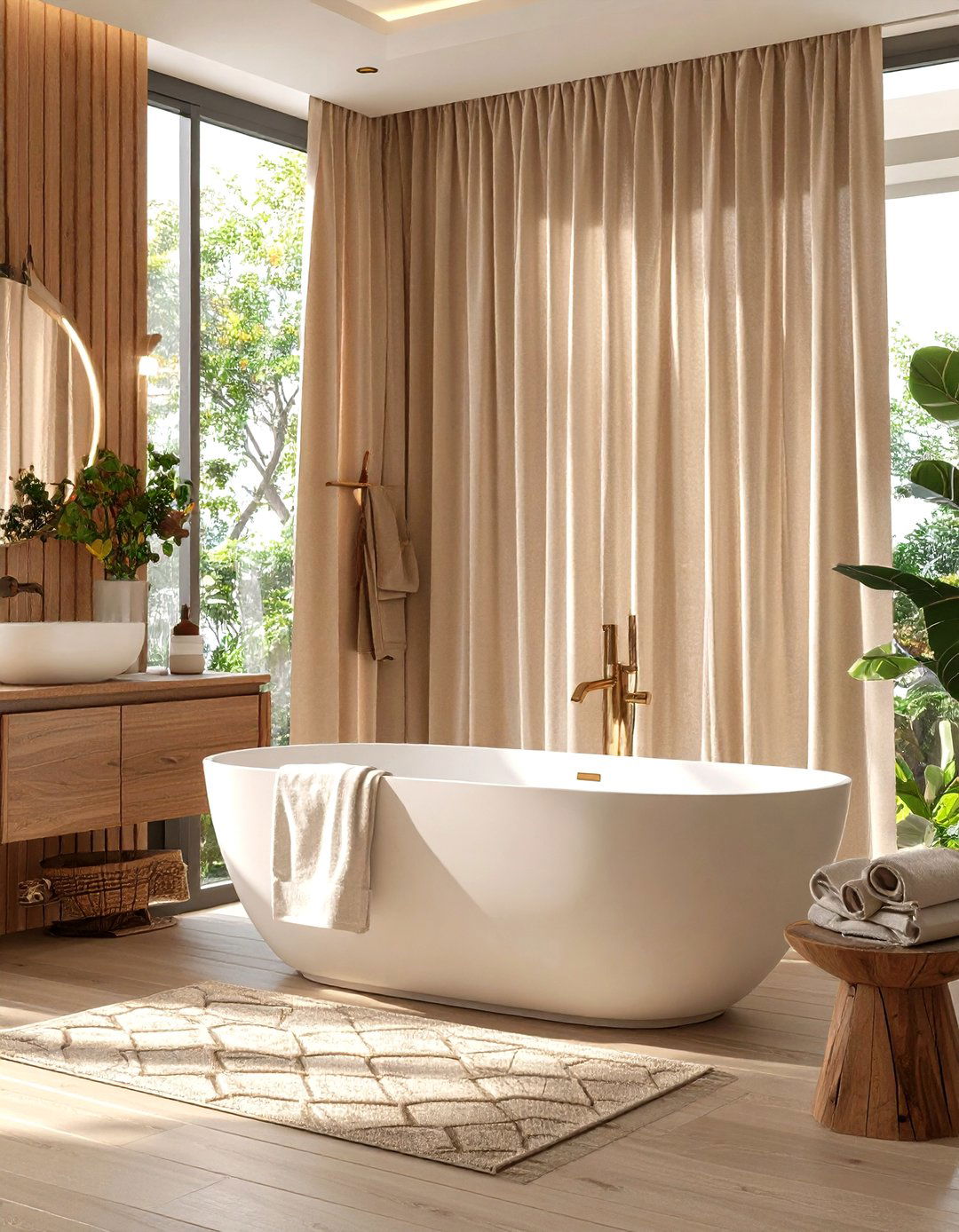
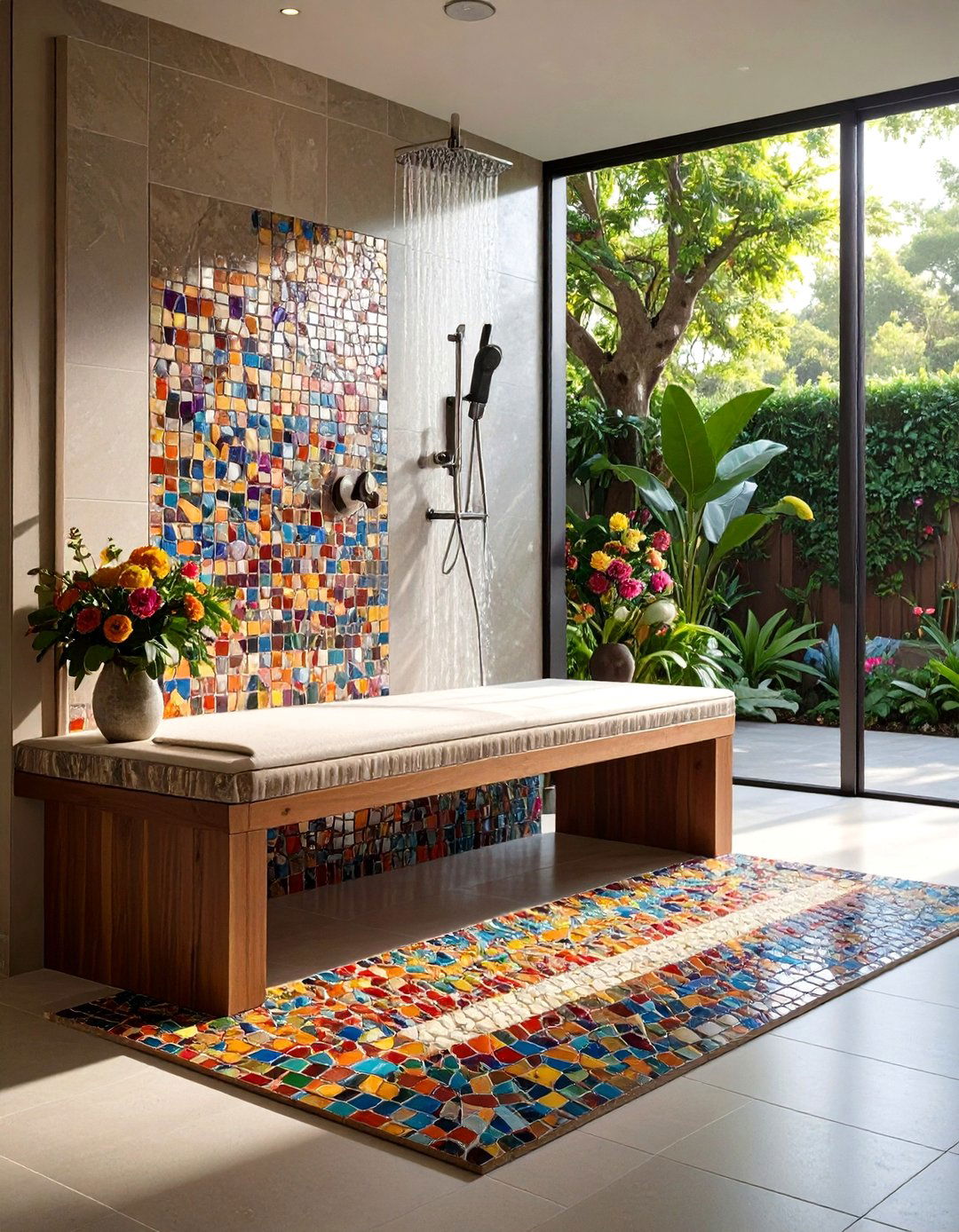

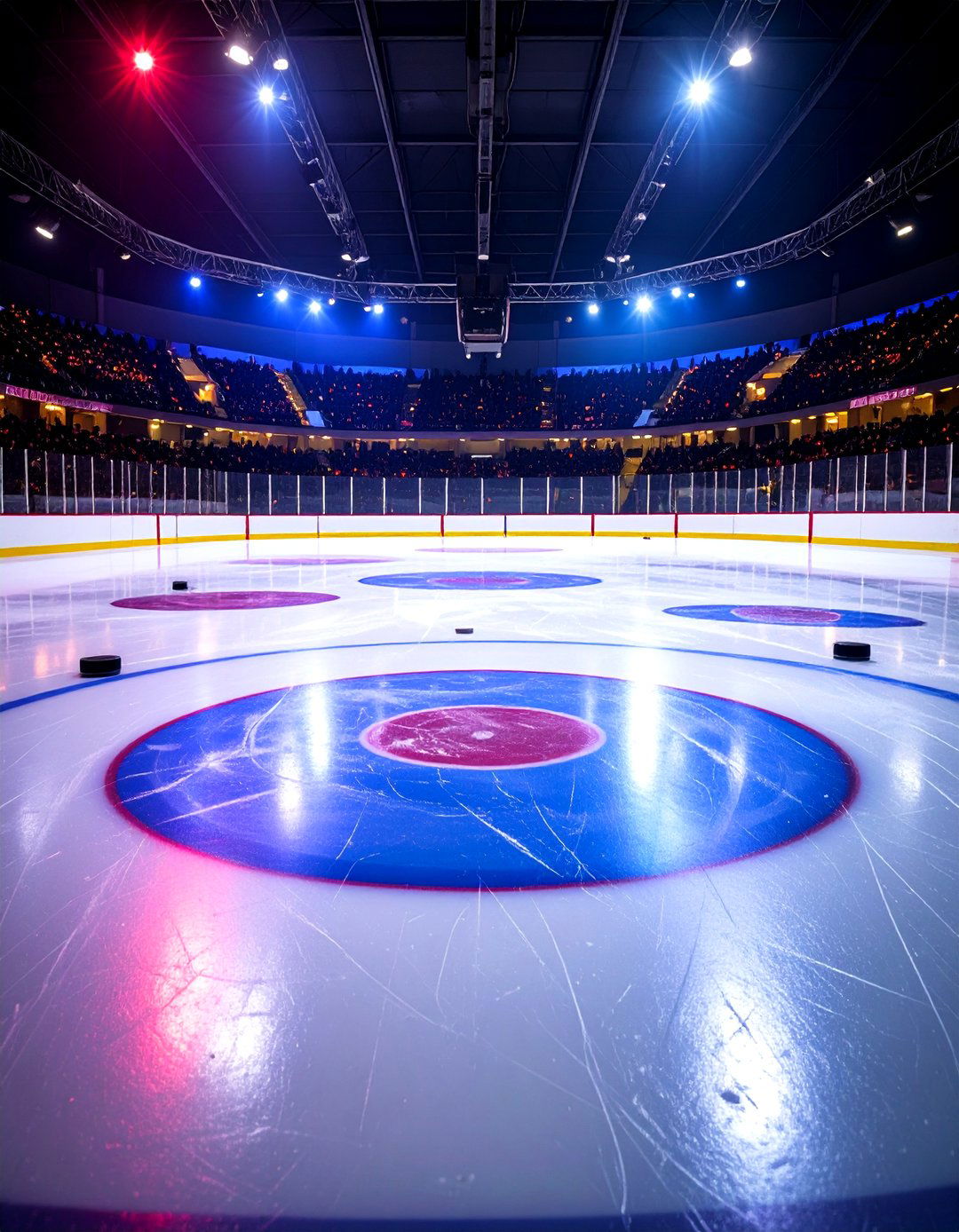
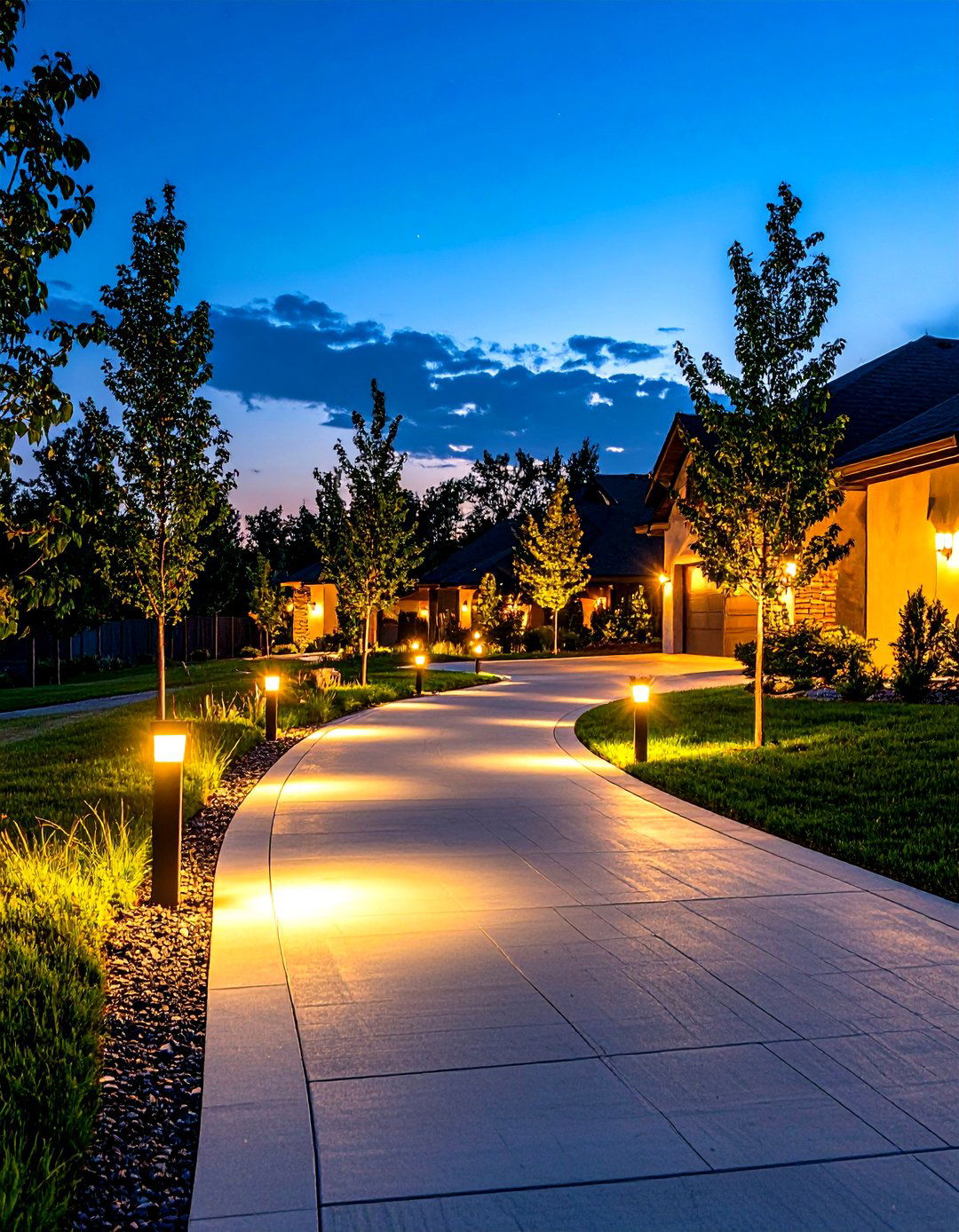
Leave a Reply